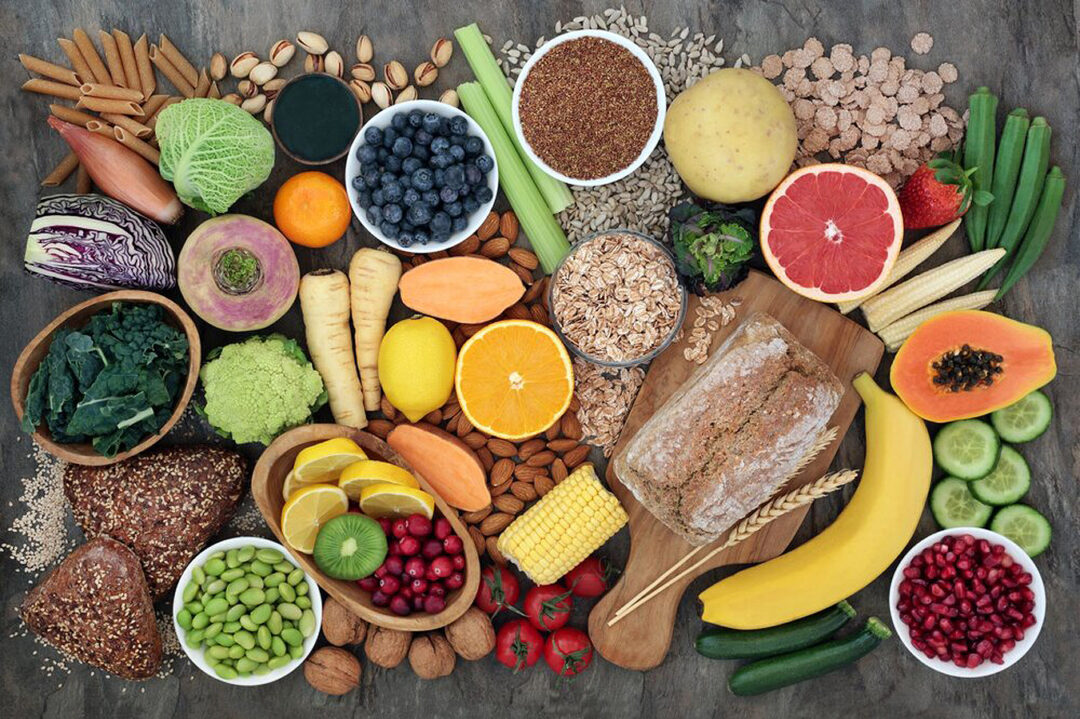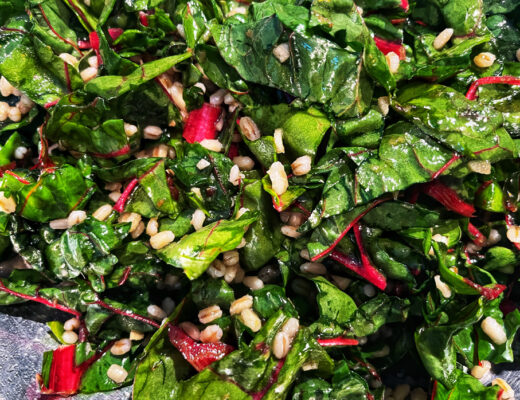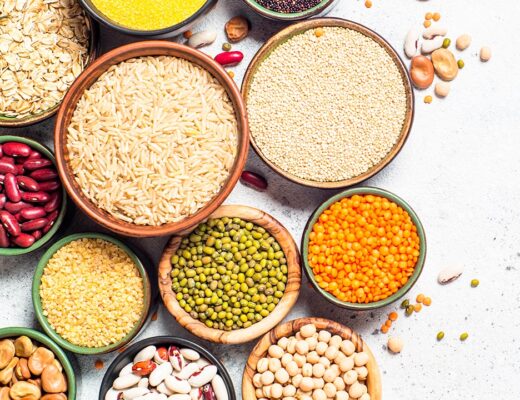Fiber is incredibly important.
It leaves your stomach undigested and ends up in your colon, where it feeds friendly gut bacteria, leading to various health benefits.
Certain types of fibre may also promote weight loss, lower blood sugar levels, and fight constipation.
The Academy of Nutrition and Dietetics recommends consuming about 14 grams of fibre for every 1,000 calories you consume daily.
This translates to roughly 24 grams of fibre for women and 38 grams for men.
Unfortunately, an estimated 95% of American adults and children don’t meet the recommended daily fibre intake. Fortunately, increasing your fibre intake is relatively easy — simply integrate high fibre foods into your diet.
What is Fibre?
Fibre is a blanket term that applies to any type of carbohydrate that your body can’t digest. The fact your body doesn’t use fibre for fuel doesn’t make it less valuable to your overall health.
Dietary fibre can offer the following benefits when you consume it:
- Reducing cholesterol. Fibre’s presence in the digestive tract can help reduce the body’s cholesterol absorption. This is especially true if you take statins, which are medications to lower cholesterol, and use fibre supplements like psyllium.
- Promoting a healthy weight. High fibre foods like fruits and vegetables tend to be lower in calories. Also, fibre’s presence can slow digestion in the stomach to help you feel fuller for longer.
- Adding bulk to the digestive tract. Those who struggle with constipation or a generally sluggish digestive tract may wish to add fibre to their diet. Fibre naturally adds bulk to the digestive tract, as your body doesn’t digest it. This stimulates the intestines.
- Promoting blood sugar control. It can take your body longer to break down high fibre foods. This helps you maintain more consistent blood sugar levels, which is especially helpful for those with diabetes.
- Reducing gastrointestinal cancer risk. Eating enough fibre can have protective effects against certain cancer types, including colon cancer. There are many reasons for this, including that some types of fibre, such as the pectin in apples, may have antioxidant-like properties.
Fibre offers many health benefits, but it’s important to incorporate fibre-containing foods gradually over the course of a few days to avoid adverse effects, such as bloating and gas.
Drinking plenty of water while you up your fibre intake may also help keep these symptoms at bay.
Here are 22 high fibre foods that are both healthy and satisfying.
1. Pears (3.1 grams). One of the best fruit sources of fibre. Fibre content: 5.5 grams in a medium-sized, raw pear, or 3.1 grams per 100 grams.
2. Strawberries (2 grams). Strawberries are a delicious, healthy option that can be eaten fresh. Interestingly, they’re also among the most nutrient-dense fruits you can eat, boasting loads of vitamin C, manganese, and various powerful antioxidants. Fibre content: 3 grams in 1 cup of fresh strawberries, or 2 grams per 100 grams.
3. Avocado (6.7 grams). The avocado is a unique fruit. Instead of being high in carbs, it’s loaded with healthy fats. Avocados are very high in vitamin C, potassium, magnesium, vitamin E, and various B vitamins. They also have numerous health benefits. Fibre content: 10 grams in 1 cup of raw avocado, or 6.7 grams per 100 grams.
4. Apples (2.4 grams). Apples are among the tastiest and most satisfying fruits and are also relatively high in fibre. Fibre content: 4.4 grams in a medium-sized, raw apple, or 2.4 grams per 100 grams.
5. Raspberries (6.5 grams). Raspberries are highly nutritious with a very strong flavour. They’re loaded with vitamin C and manganese. Fibre content: One cup of raw raspberries contains 8 grams of fibre or 6.5 grams per 100 grams).
6. Bananas (2.6 grams). Bananas are a good source of many nutrients, including vitamin C, vitamin B6, and potassium. A green or unripe banana also contains a significant amount of resistant starch, a type of indigestible carbohydrate that functions like fibre. Fibre content: 3.1 grams in a medium-sized banana, or 2.6 grams per 100 grams.
Other high fibre fruits
- Blueberries: 2.4 grams per 100-gram serving
- Blackberries: 5.3 grams per 100-gram serving
7. Carrots (2.8 grams). The carrot is a root vegetable that’s tasty, crunchy, and highly nutritious. It’s high in vitamin K, vitamin B6, magnesium, and beta carotene, an antioxidant that turns into vitamin A in your body. Fibre content: 3.6 grams in 1 cup of raw carrots, or 2.8 grams per 100 grams.
8. Beets (2.8 grams). The beet is a root vegetable that’s high in various important nutrients, such as folate, iron, copper, manganese, and potassium. Beets are also loaded with inorganic nitrates, which are nutrients shown to have various benefits related to blood pressure regulation and exercise performance. Fibre content: 3.8 grams per cup of raw beets, or 2.8 grams per 100 grams.
9. Broccoli (2.6 grams). Broccoli is a type of cruciferous vegetable and one of the most nutrient dense foods on the planet. It’s loaded with vitamin C, vitamin K, folate, B vitamins, potassium, iron, and manganese and contains antioxidants and potent cancer-fighting nutrients. Broccoli is also relatively high in protein, compared with most vegetables. Fibre content: 2.4 grams per cup, or 2.6 grams per 100 grams.
10. Artichoke (5.4 grams). The artichoke doesn’t make headlines very often. However, this vegetable is high in many nutrients and one of the world’s best sources of fibre. Fibre content: 6.9 grams in 1 raw globe or French artichoke, or 5.4 grams per 100 grams.
11. Brussels sprouts (3.8 grams). The Brussel Sprout is a cruciferous vegetable that’s related to broccoli. They’re very high in vitamin K, potassium, folate, and potent cancer fighting antioxidants. Fibre content: 3.3 grams per cup of raw Brussels sprouts, or 3.7 grams per 100 grams.
Other high fibre vegetables. Almost all vegetables contain significant amounts of fibre. Other notable examples include:
- Kale: 3.6 grams
- Spinach: 2.2 grams
- Tomatoes: 1.2 grams
All values are given for raw vegetables.
12. Lentils (7.3 grams). Lentils are very cheap and among the most nutritious foods. They’re very high in protein and loaded with many important nutrients. Fibre content: 13.1 grams per cup of cooked lentils, or 7.3 grams per 100 grams.
13. Kidney beans (6.8 grams). Kidney Beans are a popular type of legume. Like other legumes, they’re loaded with plant-based protein and various nutrients. Fibre content: 12.2 grams per cup of cooked beans, or 6.8 per 100 grams.
14. Split peas (8.3 grams). Split Peas are made from the dried, split, and peeled seeds of peas. Fibre content: 16.3 grams per cup of cooked split peas, or 8.3 per 100 grams.
15. Chickpeas (7 grams). The Chickpea is another type of legume that’s loaded with nutrients, including minerals and protein. Chickpeas form the base of hummus, one of the easiest spreads to make yourself. Fibre content: 12.5 grams per cup of cooked chickpeas, or 7.6 per 100 grams.
Most legumes are high in protein, fibre, and various nutrients. When properly prepared, they’re among the world’s cheapest source of quality nutrition.
Other high fibre legumes include:
- Cooked black beans: 8.7 grams
- Cooked edamame: 5.2 grams
- Cooked lima beans: 7 grams
16. Quinoa (2.8 grams). Quinoa is a pseudo-cereal that has become incredibly popular among health-conscious people in the last few years. It’s loaded with many nutrients, including protein, magnesium, iron, zinc, potassium, and antioxidants. Fibre content: 5.2 grams per cup of cooked quinoa, or 2.8 per 100 grams.
17. Oats (10.1 grams). Oats are among the healthiest grain foods on the planet. They’re very high in vitamins, minerals, and antioxidants. They contain a powerful soluble fibre called beta glucan, which has major beneficial effects on blood sugar and cholesterol levels. Fibre content: 16.5 grams per cup of raw oat.
18. Popcorn (14.4 grams). If your goal is to increase your fibre intake, popcorn may be the best snack you can eat. Air-popped popcorn is very high in fibre, calorie for calorie. However, if you add a lot of fat, the fibre-to-calorie ratio will decrease significantly. Fibre content: 1.15 grams per cup of air-popped popcorn, or 14.4 grams per 100 grams. Nearly all whole grains are high in fibre.
19. Almonds (13.3 grams). Almonds are a popular type of tree nut. They’re very high in many nutrients, including healthy fats, vitamin E, manganese, and magnesium. Fibre content: 4 grams per 3 tablespoons, or 13.3 grams per 100 grams.
20. Chia seeds (34.4 grams). Chia seeds are tiny black seeds that are immensely popular in the natural health community.They’re highly nutritious, containing high amounts of magnesium, phosphorus, and calcium. Chia Seeds may also be the single best source of fibre on the planet. Fibre content: 9.75 grams per ounce of dried chia seeds, or 34.4 grams per 100 grams.
Other high fibre nuts and seeds. Most nuts and seeds contain significant amounts of fibre. Examples include:
- Fresh coconut: 9 grams
- Pistachios: 10 grams
- Walnuts:6.7 grams
- Sunflower seeds: 11.1 grams
- Pumpkin seeds: 6.5 grams
All values are for a 100-gram portion.
21. Sweet potatoes (2.5 grams). The sweet potato is a popular tuber that’s very filling and has a delicious sweet flavour. It’s very high in beta carotene, B vitamins, and various minerals. Fibre content: A medium-sized boiled sweet potato (without skin) has 3.8 grams of fibre, or 2.5 grams per 100 grams.
22. Dark chocolate (10.9 grams). Dark Chocolate is arguably one of the world’s most delicious foods. It’s also surprisingly high in nutrients and one of the most antioxidant- and nutrient-rich foods on the planet. Just make sure to choose dark chocolate that has a cocoa content of 70–95% or higher and avoid products that are loaded with added sugar. Fibre content: 3.1 grams in a 1-ounce piece of 70–85% cacao, or 10.9 grams per 100 grams.
Source: https://www.healthline.com/nutrition/22-high-fiber-foods






No Comments